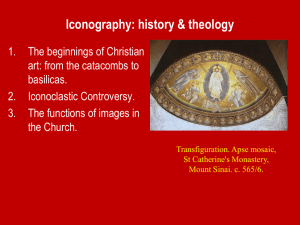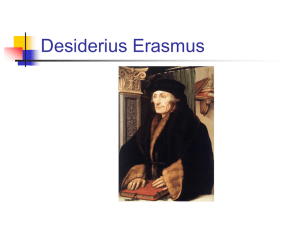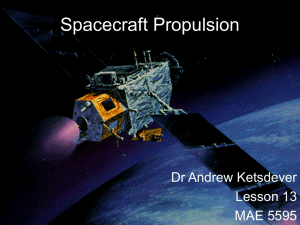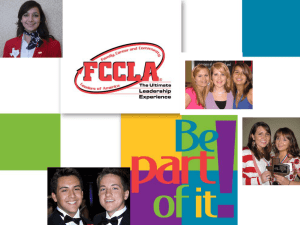slideshow - Harvard University Department of Physics
advertisement
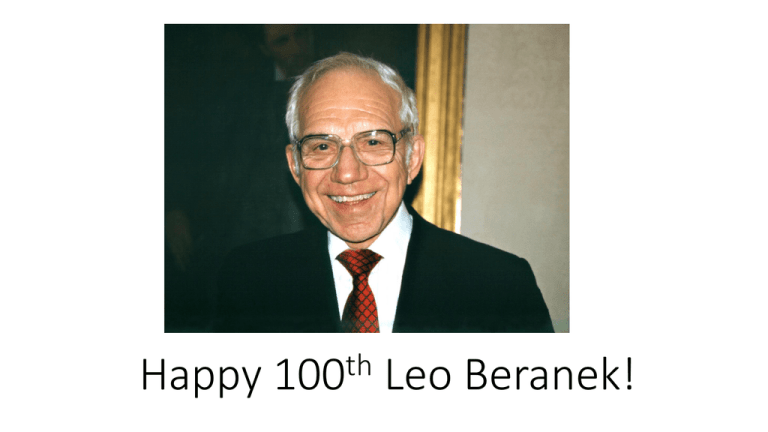
Happy th 100 Leo Beranek! Where did all his energy come from? • Leo the radio man: • At the age of 10 Leo assembled and devoured the instructions for a Crosby single-tube radio kit. The Crosby single-tube radio assembled A single tube regenerative receiver like the Crosby Note the adjustable positive feedback through the tickler coil. • At the age 14 – learned radio repair from a correspondence course • Apprenticed to a serviceman who was a senior a Cornell College, Iowa, and • set up shop as repairman in his father’s Hardware Store. • Senior year at Cornell College Iowa: Started his first business enterprise: • Radio Repair and retail – one employee, High End Brands: • Superheterodyne radios by Atwater-Kent and RCA. An Atwater-Kent Radio A typical superheterodyne circuit from the era • Leo the Salesman (age of 14): • Salesman for The Real Silk Company: • Hosiery, Lingerie and Underwear door to door. • Leo the musician: • Age of 10+: Listening to music on the one-tube Crosby radio – • Particularly “The King of the Ivories”, an incarcerated Jazz pianist. • First year of High School: Learned the marching drum for the school band. • Second year: Learned Trap Drums. • Third year, and for three years thereafter: The youngest member of a sixpiece ragtime band playing at a local lodge. • There is no better way to learn how to get along with diverse people than playing in a band… • Leo succeeds through kindness and consideration: • Strolling from the library in Mt Vernon, Leo saw a glum man with Mass. license plates and a flat tire. Leo set to work changing it – and found the man was Glen Browning, who’s paper Leo had just been reading in the library. • Glen invented a regenerative receiver while he was at Harvard, and founded the Browning-Drake Radio company. He convinced Leo to apply for graduate school at Harvard. • With the help of with Glen’s recommendation Leo was accepted with a scholarship. An advertisement for a radio that used the Browning-Drake circuit. Note the selectivity enhancement achieved by regeneration. • Leo’s start in Television • At the suggestion of Browning in 1937 Leo worked at a correspondence training school, the Massachusetts Television Institute. • Leo finds Acoustics at Harvard • Desperate for funds Leo instantly accepts an offer from F. V. Hunt to be his laboratory assistant in developing an improved phonograph cartridge. • Leo developed a full-range bass loudspeaker, and designed an amplifier to power it. He succeeded in developing a pickup with a pressure of only 2 grams, more than an order of magnitude lighter than any previous pickup. • The new pickup made the vinyl LP record possible. • Leo went on to get his PhD in acoustics with Hunt. His thesis on measurement of acoustic materials was done in one year. Leo as a builder of successful teams • B17 bombers were so noisy the pilots could only communicate with the gunners by Morse code. • Just after his thesis was accepted Leo was selected by the National Research Defense Committee to lead a research group later called the Acoustics Research Laboratory. • Leo recruited the brightest graduate students from all over the country, with skills in Physics, Mathematics, and Electronics. His budget eventually reached more than one million dollars a year. • He found current headphones had almost no response above 1200Hz. • He found only one that was good enough, found ways to production test it, and rushed it into production. His team invented the kapok-filled donut that sealed it to the ear. • And invented the noise-cancelling microphone. • The equipment became standard, and vital to the war. Oxygen flight helmet with earphones and noise cancelling mike. Sign put by Leo on the Anechoic chamber The new earphone driver • The army needed a way of testing very high power loudspeakers, ostensibly for directing troops • But actually for duplicating the sound of a platoon of armor roaring into position. The Top Secret Ghost Army of inflatable armor needed sound to be convincing. Inflatable Tank Truck mounted high power speaker Military Wire Recorder • To build a test chamber Leo used his acoustic measurement equipment to design the best possible sound absorbers, and found a manufacturer for 19,000 of these fiberglass wedges. • He installed them in a concrete structure with internal dimensions of 38’x50’x38’ – The largest in the world at the time. He named it an “Anechoic Chamber”. • At Harvard it was just “Beranek’s box” • The Navy had a communication problem in the Command Information Center (CIC). • Radar operators plotted the course of incoming aircraft manually and passed information to friend/foe determination. • By the time coordinates were passed to gunners it was too late. • Beranek recommended setting up a CIC training center on land with all the latest radar equipment. • The radar equipment could only be deployed on a ship – so the Navy commissioned the facility as a ship – the USS Beavertail, with Beranek as commander. • The resulting recommendations were taken very seriously by the Navy. • Beranek had introduced the armed forces to systems research. Main Battery Plot Board, USS Canberra 1967 CIC USS Spruance 1975 • After the war Leo went to MIT and developed their course in acoustics, later taught by Amar Bose. • But by 1948 he was recruiting colleagues for a new enterprise – the firm of Bolt, Beranek, and Newman – BBN. • Once again Beranek recruited the brightest people he could find, and mentored, encouraged, and formed them into highly creative teams. • It started with acoustic designs for the UN headquarters in New York, • Followed by the worlds largest (and most effective) muffler, for the supersonic jet engine facility in Cleveland. It attenuated frequencies from 5Hz to >5000Hz by more than 30dB. • BBN was asked by the Port of New York Authority to develop noise standards for the take-off and landing of commercial jet aircraft. • There were many complaints from communities near airports about noise. • If jets were noisier they would be banned – and jets were much noisier. Beranek found Boeing 707 takeoffs were subjectively 15dB louder than the loudest propeller aircraft. By making unimpeachable measurements and holding a hard line against Boeing, after a long and fierce fight Beranek and the Port Authority forced manufactures to add relatively heavy silencers to the engines and change the takeoff flight patterns. A Boeing 707 with silencers and landing gear down. Beranek and the NY Port Authority made commercial jet aviation possible. BBN and the Internet • By 1955 Leo decided that computers would become a dominant force, and he showed his talent for recognizing and courting brilliant people by luring J. C. R. Licklider (a brilliant psychologist who worked with Leo during the war) away from MIT. • • • • • Lick joined the firm in 1957 – and immediately demanded that Beranek purchase a state of the art digital machine, for $30,000. Lick became a proficient programmer – and so impressed Ken Olson that DEC loaned BBN the first PDP-1. Lick and his group developed the concept of time sharing, and started Telnet – a dial-up service for scientific computing. Lick’s book “The Dream Machine” predicted many of the changes that have and will occur when there is universal connectivity. Although Lick left BBN in 1962 to join ARPA in Washington, his group went on to design and implement what we now know as the internet. “The hope is that, in not too many years, human brains and computing machines will be coupled together very tightly, and that the resulting partnership will think as no human brain has ever thought and process data in a way not approached by the informationhandling machines we know today.” J. C. R. Licklider, 1960 Music, Acoustics, and Architecture • After the successful project at the UN in 1950 Beranek was asked to consult on a new concert hall for New York. • With typical thoroughness Beranek embarked on a research project to discover what were the acoustic characteristics of a great hall. • The result was a beautiful book, which instantly became the classic reference in the field: “Music, Acoustics, and Architecture.” • As more data became available Beranek has upgraded it twice, the latest in 2004. • The book includes photographs and line drawings of many great halls, • all personally visited by Beranek, along with comments about their sound quality by Beranek and others. Carnegie Hall before and after the renovation in 1986 that removed the proscenium curtain and stage fabric responsible for the hall’s previous fine reputation. (The bottom photograph on the right shows the old hall.) Beranek was not consulted. His prose description of the acoustics in the 2004 edition of the book is accurate and scathing. (The recent replacement of the stage floor changed nothing, but the hall management insists the sound is now perfect. It is not.) America’s Best TV Station • In October of 1962 Beranek and a group of investors made a bid to the FCC to acquire the broadcasting license of channel 5 from the Boston Harold. • They formed Boston Broadcasters Incorporated (BBI), and elected Beranek as president. • The Herald fought them tooth and nail, and the project bled money for 17 years as the issue was in courts – including three rulings by the Supreme Court. Beranek invested all of his lifetime savings, but BBI eventually won. WCBV channel 5 was born, with Beranek as president. • Their combination of more local programming, news and editorials quickly raised the channel 5 ratings from the bottom to the top of the Boston market. • Beranek stayed as president from 1963 to 1979, when he became chairman of the board. In 1982 the station was sold for $225 million – the highest price ever paid for a broadcast station until then. Recent Hall Designs • In 1992-1997, in collaboration with Takayuki Hidaka and Takahiko Yanagisawa Beranek designed two fine halls in Tokyo – the Tokyo Opera City Concert Hall and Opera House. Several other Japanese halls followed. • Having learned from Philharmonic Hall in New York, Beranek fought hard for design features necessary for good acoustics. • He found ways to satisfy the architect’s demands visually while keeping the designs acoustically sound. His persistence paid off. The halls are excellent. The Tokyo Opera City Concert Hall The Tokyo Opera City Opera House The Secrets of Success • To quote from the Boston Globe on the occasion of the opening of Channel 5: • AT 54, [Beranek] has a knack for communicating. A colleague said yesterday the ‘Leo is perhaps the greatest motivator of young men that I know.’ That is one reason why Bernaek has been able to assemble such a bright group of young men around him at BBN, the company he helped found 20 years ago.” • To quote from Leo Beranek’s autobiography: • “In every enterprise, my guiding principle has been to surround myself with others smarter than I. Good people, I’m convinced, want to be in the company of equally good, or better, people.” • “But, as I quickly discovered, any organization is no better than its leader, who holds the key to success or failure. Whenever I did not take a forceful enough stand, as with the design of Philharmonic Hall in New York, the results were disastrous – or nearly so.” • “One central lesson I’ve learned is the value of taking risks and of moving on when those risks don’t pan out or the odds look better elsewhere. Many feel I went too far when I gambled my life’s savings in a contest for ownership of a television station. The odds against success there were great, but the pay-off appeared tens of times greater, so I threw caution to the winds.” Happy 100th Birthday Leo!



